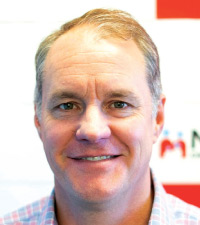Workplace Wellness
Our jobs can demand a lot from us as working professionals, and in such a fast-paced world, stress seems to be on the rise. In fact, according to a report titled Stress…at Work published the National Institute for Occupational Safety and Health in January of this year, 75% of employees in the U.S. believe that workers have more on-the-job stress than a generation ago. Not only that, but 25% view their jobs as the top stressor in their lives. It’s eye-opening to hear that a quarter of Americans view work as their number one source of stress. This stress, of course, can spill over into others areas of our lives and cause negative effects in our relationships, family, finances, and ultimately, our all-around mental health. When the pressure’s on, something has to give—people can’t constantly produce, create, and use up their energy without replenishing their inner well. It’s for this reason that there is a growing demand for promoting health and wellness in the workplace. We connected with some local professionals who shared their wisdom on the topic and information about the services they offer to support workplace wellness.
Robyn Burnett, LMHP, manager of account and education services at Best Care Employee Assistance Program (EAP), shared her observations on recent trends in workplace wellness.
“I have noticed many employers moving towards outsourcing consultants to help with wellness goals,” Robyn said. “This could mean hiring a local personal trainer to start a Facebook group just for your employees offering daily tips and goals as well as onsite/offsite group fitness tasks/challenges. For emotional/mental health services, consider bringing in someone like Best Care to offer trauma/grief debriefing for employees going through a great deal. Most recently, I have seen employers offering a ‘quiet’ space or room for employees to go and decompress for a few minutes. This space could offer things such as stress balls, essential oils, calming music, lounge furniture, or even a massage chair. Our brains need a way of decompressing, just like the body.”
Best Care EAP offers a wide-array of services for organizations and their employees, including professional development training, performance coaching, short-term counseling, workplace grief/trauma debriefing, substance/alcohol assessments, and customized workplace wellness solutions. Their professional development opportunities span from over 80 topics in areas such as management/leadership, work/life balance, and workplace relationships. Best Care partners with organizations, educational institutions, and member association groups, no matter their size. They believe that mental health services should be treated no differently than other wellness initiatives, as research indicates that at minimum one in four employees is suffering from a mental health issue.
For employers who may be wondering what their employees most want and need from them to best support their wellness at work, Robyn has a suggestion.
“Listen to those employees who are actively engaged,” she said. “They will tell you what you need to know. It’s not always about getting an ice machine or offering chair massages monthly. Yes, those things are nice but not always going to get you the end result you are looking for. Solicit advice from those who you truly trust and value what they have to say. When it comes to well-being, it’s about determining what it is you are trying to achieve and then sticking with it. Oftentimes employers are looking at wellness as a “box” they need to check rather than looking at it as a necessity and a way of establishing a healthier workforce. It is not a “one size fits all” model with wellness. What works for one organization may not work for another and it also means sometimes thinking outside the box with how to achieve your wellness goals. If you hear from some of your valued employees that they struggle to find time to go to gym, can you offer “flex” time over lunch to allow them that time to exercise? Lastly, wellness means so much more than physical exercise. It means looking at the whole person and asking yourself as an employer what you can do to help with some of those areas. Whole-person health means looking at five areas: physical, emotional/mental, nutrition, spiritual, and environmental.”
Last of all, Robyn shared how employees can look to their own well-being in their habits at work and outside of work.
“Allow time for yourself and ensure you’re scheduling it on your calendar,” she advised. “Whether this is a lunch with a friend, getting in some physical activity, or scheduling a counseling session that you’ve been putting off, it’s important to schedule this into your routine, just like a management meeting. I know I am a much more productive and valuable employee when I am taking care of myself, so that tends to be time very well spent. If our personal lives are not going well, our work is the first thing that suffers, so invest in your personal life so it doesn’t end up affecting your work life.”
Kayla Leddy, MS, LIMHP, LIPC, CA with Clearwater Counseling, also shared tips on how employees can take care of themselves and employers can take care of their employees in order to improve the workday.
“Self-care is so important for everyone, and it can be practiced in many ways, depending on personal preference,” she said. “Some examples might include taking breaks throughout the day to step away from the desk or taking a moment to talk to a coworker for a couple of minutes just to ease some stress. Typically, a 9-to-5 job promotes two 15-minute breaks as well as one 30-minute lunch break. However, mini breaks to stop at a coworker’s desk to look at a funny cat video or to step outside and walk around the building for fresh air or to go fill up a coffee cup more than once an hour are all okay and should even be encouraged! Those mini breaks refresh the brain and help us to regain focus. Encourage employees to leave the office for their lunch break instead of working on something as they are eating their sandwich. It’s also important to encourage employees to use vacation days and sick days. I would love if they weren’t even called ‘sick days’ anymore but instead mental health days as being sick isn’t always the reason someone needs a day off.”
“When I take a self-care day, it isn’t taking one kid to the doctor, the other kid to the dentist, or standing in line at the DMV to register my car,” Kayla shared. “It is a day where I am relaxing and doing things I enjoy—starting a new book, binge watching something on TV, or having an extra long workout at the gym. It’s not running all over town to get errands done. It’s making time for friends or even a date night. I have been trying to take one half-day every month to work from home to catch up on paperwork. That way, I can do a load of laundry at the same time, but I am still feeling productive so it’s taking stress away. I am still trying to figure out my own balanced work life, but small changes can make a big difference. Also, speaking up when you need a break is so important.”
Kayla emphasized that it’s very important for supervisors and management to be leaders and demonstrate what self-care looks like. This might mean marking on their calendars that they have a therapy appointment or even a hair appointment. They need to show what self-care looks like and that they are open about it so their employees know that it is more than okay to practice self-care, too.
Another aspect of workplace wellness for employers to consider and keep up with is the healthcare benefits they are offering to their staff. Small business owners especially need to established affordable healthcare options for their employees in order to help current employees stay healthy and to compete with larger organizations. A membership-based healthcare plan with a direct primary care physician is a great option for small businesses. Dr. John Hallgren, and co-founder of Mission Direct Primary Care, told us about the ways their services improve life for employees and their employers.
“Our memberships provide excellent access to high-quality primary care which has been shown to improve outcomes for diseases, so you’ll have healthier employees who miss less work for illness and injury,” Dr. Hallgren said. “If your business doesn’t currently offer a health benefit or offers a high-deductible health plan, the addition of a Mission Direct Primary Care membership for your employees can eliminate their out-of-pocket costs for primary care and give them access to a doctor that can see them quickly and on-time and who will take their calls after hours for urgent needs.”
Achieving a healthy office environment doesn’t have to be a huge undertaking. There are very simple ways to institute wellness in the workplace. An example is drinking more water. There is plenty of research out there that shows that the greater the water consumption, the better the mood. Tension, depression, and confusion are areas that improve when we drink more water throughout our day.
Aqua Systems is one company that cares that your water is the safest and healthiest it can be and wants to make it easy for people to access pure water, whether it’s at home or at work. That’s why they are passionate about water softeners and drinking water solutions that are proven to eliminate water quality issues, and they work to make these solutions simple, clear, and affordable. What’s more, they’ve been pursuing this passion for nearly 60 years. They are proud to save their customers money from expensive alternatives and assist them in living healthier lives.
Keeping well at work is so important for professionals in today’s world. People have a lot on their plates, especially considering that life exists outside of work as well and that there are always things demanding energy and attention. Take advantage of wellness resources in the community, and remember to put self-care on your calendar! You won’t regret it.




